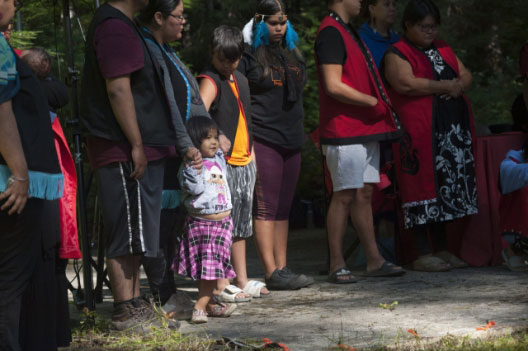The Gitanyow Hereditary Chiefs are sounding the alarm on the surging costs of living in Northwest British Columbia, directly associated with the LNG Canada project initiated in 2019. This concern is crucial as the Ksi Lisims LNG Project is now advancing through the British Columbia Environmental Assessment Office’s (BC EAO) review process.
Ksi Lisims anticipates thousands of additional workers to the region: 1300 plus another workforce for supplemental projects, including the PRGT pipeline and associated hydroelectric development construction.
“The promise of economic benefits comes with the harsh reality of rising housing costs, food prices, and more,” says Simogyet (Hereditary Chief) Malii.
“As LNG developments escalate in our region, it is increasingly important that our understanding of their socio-economic impacts and our ability to manage those impacts keep pace with this rapidly developing sector.”
For over a decade, the B.C. government has actively pursued the gas export industry to tap into the rich natural gas deposits straddling the B.C. – Alberta border. Proposed projects span Northwest B.C., connecting to the coast where the gas will be liquefied and shipped to Asian markets.
The flood of thousands of workers into the region at all stages of energy development brings economic growth and employment opportunities but also affects the socio-economic well-being of local communities. Impacts can include rising living costs and disparities in local incomes between the industry and other sectors, overburdening essential services, and increases in crime.
The City of Terrace’s Economic Development office recently warned local communities of the adverse effects of LNG development in their public comment submitted to the BC EAO on the proposed Ksi Lisims LNG Project last November. Gitanyow is only one hour away from Terrace, and many community members frequent this service hub for medical, food, and other services.
“Being the hub has allowed for massive inflation in professional and retail services, a strain on municipal infrastructure like roads, refuse disposal, lodgings and housing,” declares the submission.
“Some might see this influx as a key economic driver but it has actually been the opposite … The influx of workers required for this type of development has seen housing in Terrace reach an all time high in prices and a vacancy rate of less that 1%. It has been determined that sub contractors and related services have artificially inflated the market due to their quick need and short term motives. A result to the city is that we have seen double digit increase in our homeless population which is now 1 in 8 are homeless. This spike due to landlord evictions for higher rents and a sale market that is out of reach.”
Gitanyow shares the concerns of the City of Terrace and also worries about the combined and cumulative impacts on food security from rising food costs in the stores and environmental and climate impacts to salmon – a mainstay of Gitanyow’s diet.
“Food prices have always been higher in remote communities, with Indigenous communities being the hardest hit, but this is extreme,” says Naxginkw, Tara Marsden, Wilp Sustainability Director for the Gitanyow Hereditary Chiefs.
“Our people rely heavily on traditional foods that will be impacted by LNG development, as well as potential increases in store-bought foods.”
A study by the B.C. Centre for Disease Control, released in 2022, shows that the Northwest health service delivery area, encompassing Kitimat, Terrace, Prince Rupert, and Haida Gwaii, has the highest average food costs in B.C. “A nutritious diet for a family of four in this region costs nearly 25 percent above the provincial average, impacting health and contributing to food insecurity.”
The report also states that “access to food that is affordable, culturally preferable, nutritious and safe is critical to the health and wellbeing of British Columbians.”
The Gitanyow Hereditary Chiefs call on the gas industry and the provincial government to balance economic benefits with community welfare. Free, prior and informed consent of all affected Indigenous peoples is the norm that the industry and government should live up to, not just a select few.
###
The Simigigyet’m Gitanyow (Gitanyow Hereditary Chiefs) are an innovative, traditional Indigenous government mandated to protect Gitanyow Nation’s lands, resources, and laws. The Gitanyow have never ceded or surrendered title to their lands, rights to their resources, or the power to make decisions within their Lax’yip (Territory). The Gitanyow Hereditary Chiefs’ goal is to establish government-to-government agreements that form the foundation of a modern-day treaty through an incremental treaty approach. In 2012, the Gitanyow Hereditary Chiefs and the province of British Columbia signed the Gitanyow Lax’Yip Land Use Plan to guide all industrial activity. Gitanyow Nation is part of the larger Gitksan Nation, encompassing 6,200 square kilometres in the Nass and Skeena Watersheds (Kitwanga and Kispiox Rivers).
Learn more by visiting gitanyowchiefs.com and following @gitanyowchiefs on Instagram.
